Top Pick for
Overall air conditioner

Top Pick for
Overall air conditioner

Top Pick for
Portable air conditioner
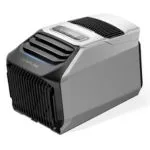
Top Pick for
Air conditioner for small bedrooms

Top Pick for
Window air conditioner

An air conditioner, often referred to as AC, is a system or machine that treats the air in a defined, usually enclosed area via a refrigeration cycle in which warm air is removed and replaced with cooler, more comfortable air.
When choosing the right air conditioner, there are a few key aspects to consider. First and foremost, you need to take into account the size of your room. An air conditioner that's too small won't cool your room efficiently, and one that's too big could make your room feel damp and clammy.
Next, consider the energy efficiency rating. An air conditioner with a higher Energy Efficiency Ratio (EER) or Seasonal Energy Efficiency Ratio (SEER) will use less energy, saving you money in the long run.
Also, think about your air quality. Some air conditioners come with special filters that can remove allergens, smoke, and other pollutants from the air.
Lastly, don't forget about the noise level. If you're easily disturbed by noise, try to find an air conditioner that operates as quietly as possible. Remember, the right air conditioner can keep you cool and comfortable, but choosing the wrong one could leave you sweating over a costly mistake.
To help you choose the best option for your home, the team at Finder has evaluated numerous air conditioners available online. We assessed air conditioners based on customer reviews and ratings as well as key product features.
Read more detail on our methodology below.

The Fujitsu 7.1kW Reverse Cycle Split System Inverter Air Conditioner DRED Enabled, with a stellar rating of 4.7 out of 5 stars on Appliances Online, is arguably the best overall air conditioner on the market today.
Its features include an up/down swing louvre, auto restart, economy mode, and a blue fin heat exchanger. The device also has a weekly timer and a long-life Ion deodorisation filter for enhanced air quality. Additionally, the unit boasts an automatic louvre and auto-changeover functions, ensuring optimal performance and user convenience.
Other features include a sleep timer, washable panel, filter sign, Apple-catechin filter, and a human sensor. Not to mention, the on-off timer and right/left swing louvre functions allow users to customise their cooling experience. Finally, double-swing automatic technology provides superior coverage throughout the room.
However, this model's Energy Star Rating for cooling is somewhat average at 3.5, and the rating for heating is slightly below average at 2.5. These ratings suggest that while the unit is highly effective, its energy efficiency when heating or cooling could use some improvement.

The EcoFlow Wave Portable Air Conditioner is our pick for the best portable option. With its impressive 4,000BTU cooling capacity, it efficiently cools spaces at a rate that surpasses most competitors, making it an ideal choice for compact spaces like tents, RVs, and small off-grid locations.
The innovative Four Ways to Charge feature, including a solar option, a car socket, a portable power station, and a traditional wall outlet, ensures optimal flexibility and unparalleled portability. Plus, the add-on DELTA Max/DELTA Pro extends run times to an extraordinary 6-12 hours, outperforming other power stations by a significant 28%.
Moreover, the EcoFlow app introduces a new level of control and customisation for users, from prioritising extended run times to optimising cooling bursts. The powerful yet compact design of the EcoFlow Wave makes it a perfect substitute for traditional RV air conditioners, offering the added benefit of portability. Additionally, its unique water evaporation feature eliminates excess water, ensuring minimal cooling setup maintenance.
Despite these commendable features, there may be limitations when cooling larger areas. The EcoFlow Wave's design is optimised for smaller spaces, so it may fall short in larger environments. Furthermore, while the various charging methods enhance portability, users without access to a car socket or portable power station might find the charging process slightly less convenient.

We also chose the Fujitsu 7.1kW Reverse Cycle Split System Inverter Air Conditioner DRED Enabled as the best split system air conditioner available online, with its advanced features and superior efficiency. It has earned a rating of 4.7 out of 5 stars on Appliances Online.
Its indoor sound level ranges from a quiet 29 to 49 dB, while the outdoor unit operates at around 66 dB. This model includes a variety of features such as an auto shut louvre, a program timer, an all DC, a blue fin heat exchanger, a long-life Ion deodorisation filter, a sleep timer, a washable panel, an Apple-catechin filter, a human sensor, a double swing automatic, to name a few, making it highly versatile and convenient to use.
However, there are a couple of downsides to this model. The outdoor sound level might be noticeable in quieter neighbourhoods, and the long list of features could be overwhelming for users who prefer simplicity.

The Kelvinator 3.9kW/3.6kW Window/Wall Reverse Cycle Air Conditioner is our pick for those seeking a top-tier reverse cycle air conditioner. Notably, this unit has garnered a remarkable rating of 4.7 out of 5 stars on Appliances Online and Harvey Norman, a testament to its high-quality performance and user satisfaction.
The device boasts a compact design that allows it to fit seamlessly into any space, while its easy installation process ensures that it can be set up without any hassle. Several user-friendly features are integrated into this model, including a remote control, auto swing, sleep mode, and dust filtration.
Moreover, it has gold shield external and blue shield internal corrosion-resistant heat exchangers, contributing to its longevity and durability. In terms of fan speeds, users can choose from four options, offering versatility in operation.
Despite its multitude of pros, it is important to note that the Kelvinator 3.9kW/3.6kW may not offer the same level of power as some of the more high-end models on the market. In addition, the auto restart function might pose a minor inconvenience for some users. Nevertheless, given its outstanding rating and valuable features, it remains a highly recommended option for a reverse-cycle air conditioner.
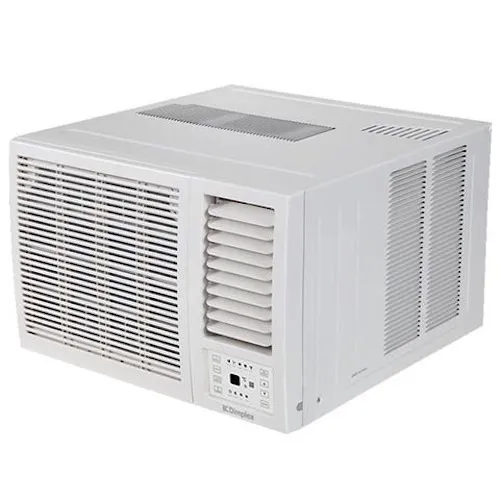
With a rating of 4.5 out of 5 stars on The Good Guys, our team has chosen the Dimplex 1.6kW Window Box Air Conditioner DCB05C as the best cheap option available online.
Its 1.6kW cooling capacity is sufficiently powerful to cool up to 10sqm, making it an ideal choice for small to medium-sized rooms. Its swing function and easy installation further enhance its value, and the 5-year domestic warranty offers peace of mind for homeowners.
However, it lacks some of the advanced features found in higher-end models, such as smart technology integration or energy-saving modes. Additionally, its capacity may not be sufficient to cool larger rooms or open-plan areas in the home. However, for its price and simplicity, this model offers solid performance and exceptional value.

The Fujitsu 2.5kW Lifestyle Range KMTC Reverse Cycle Split System Air Conditioner is an excellent choice for small bedrooms, earning an impressive 4.8 out of 5 stars on Harvey Norman. Its smart microprocessor consistently adjusts airflow in response to room temperature changes, making it highly efficient.
Furthermore, its Economy mode helps to reduce electricity bills, a bonus for any homeowner. The unit's ability to effectively absorb fine dust, moulds, spores, and other harmful micro-organisms, thanks to its apple catch-in filter, is another noteworthy feature.
However, it's important to acknowledge a couple of issues. First, the outdoor operating temperature range is limited to -15 to 24 degrees Celsius for heating and -10 to 24 degrees Celsius for cooling, which may not be sufficient in extreme weather conditions. Also, while the sleep timer does adjust the room temperature gradually at night, it might not cater to the needs of all users, especially those with specific temperature preferences that vary throughout the night.
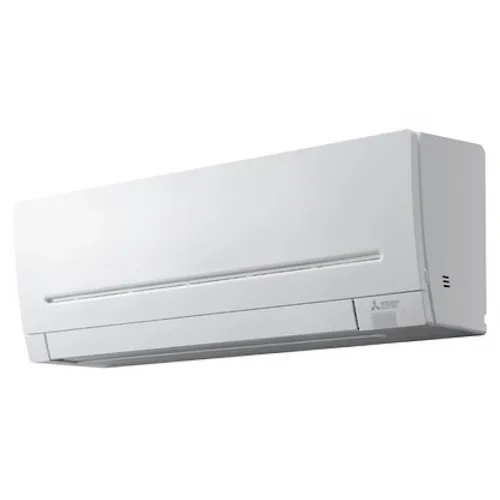
The Mitsubishi Electric 2.5kw Reverse Cycle Split System Air Conditioner MSZAP25VGKIT is our pick for the best option for large spaces. With a solid 5 out of 5-star rating on Appliances Online and Bing Lee, this product has the functionality and reliability users require.
The reverse cycle heating and cooling feature accommodates year-round weather changes, while the inverter technology ensures efficient operation. An added advantage is the quiet operation, allowing for a peaceful home environment. Moreover, features like i-Save Mode and a Blue Fin Condenser further enhance its appeal. The Weekly and 24 24-hour timer enable convenient scheduling, while the Dual Barrier Coating adds to its durability.
However, it's worth noting that this model does not come with a Demand Response Enabled Device (DRED), a potential drawback for some. Some users also said it's noisier than expected. Regardless, its reliable performance and steady quality make it a great choice.
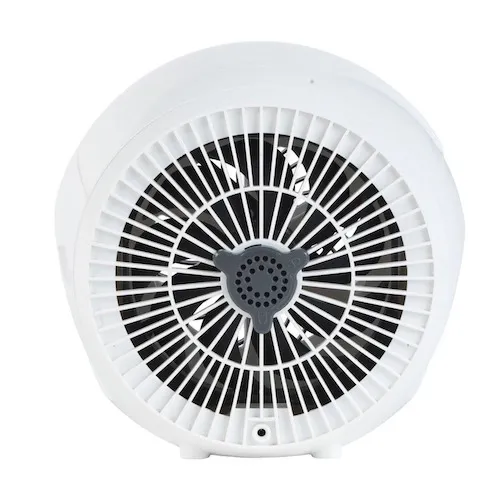
The Beldray EH3351VDE Arctic Dome Air Cooler has a commendable rating of 3.9 out of 5 stars on Amazon, making it our pick for the best evaporative cooler. Its distinguishing features include integrated cooling rings that can be frozen for better cooling and dual LED options for customisable ambience in personal spaces.
The unit provides immediate cooling in hot conditions, making it ideal for personal spaces like desktops, nightstands, and kitchen counters. Additionally, the Arctic Dome offers an added value of aromatherapy, thanks to the included aromatherapy box and 5 diffuser pads. Users can enjoy a soothing ambience with their preferred essential oil.
However, no product is without its cons. For the Arctic Dome, it's noteworthy that the essential oil needed for the aromatherapy feature is not included in the package. This may require an extra purchase, which could be inconvenient for some users. Another potential downside could be the freezing of the cooling rings. While it enhances the cooling effect, it requires prior preparation and might not be as straightforward as a plug-and-play model for spontaneous usage.
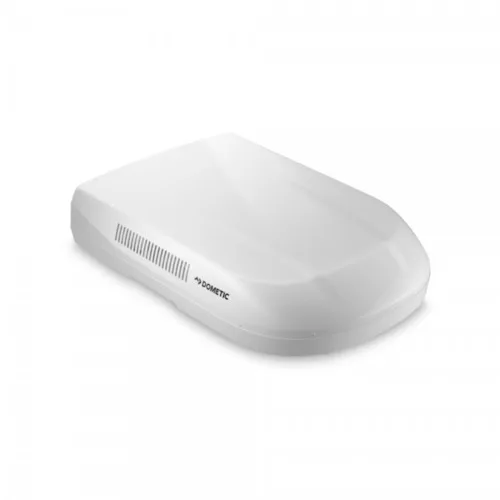
The Dometic Aircommand Ibis MK4 Reverse Cycle Roof Top Air Conditioner has earned an average rating of 4.8 out of 5 stars on Caravan RV Camping, earning itself the title of the best option for caravans.
The unit is equipped with an array of progressive features designed to enhance user experience. Its Automatic Display Brightness adjusts to the ambient light, ensuring optimal visibility under all conditions. The Auto Mode allows users to set their desired temperature, with the system taking care of the rest. Sleep Mode provides a peaceful night's sleep by reducing fan and compressor speeds, thereby minimising noise.
Touted as the best in the industry, the Turbo Fan Speed ensures a rapid cooldown, and the device's connectivity with CI-BUS compatible control panels is a significant bonus.
However, it's worth noting that top-notch performance comes with a hefty price tag of $2,500. Additionally, some users might find the assembly of its 2-piece ADB slightly complicated. Nonetheless, the Dometic Aircommand Ibis MK4 is a remarkable investment for those seeking the perfect balance of seamless operation, advanced features, and robust build quality.

The Kelvinator 3.9kW/3.6kW Window/Wall Reverse Cycle Air Conditioner is also our pick for the best window air conditioner, garnering an impressive 4.7 out of 5 stars on both Appliances Online and Harvey Norman.
This boasts a cooling capacity of 3.6 kW and a heating capacity of 3.9 kW, making it versatile for all seasons. Its compact design and easy installation are convenient features that add to its appeal.
Including a remote control, auto swing, sleep mode, and auto restart attributes enhances the user experience significantly. Notably, the gold shield external and blue shield internal corrosion-resistant heat exchangers promise durability.
Despite these numerous positives, there are two aspects that potential customers might find less appealing. For one, the energy star rating for both cooling and heating is only 2, indicating that this model is less energy efficient than some alternatives. Secondly, the unit does not include brackets.
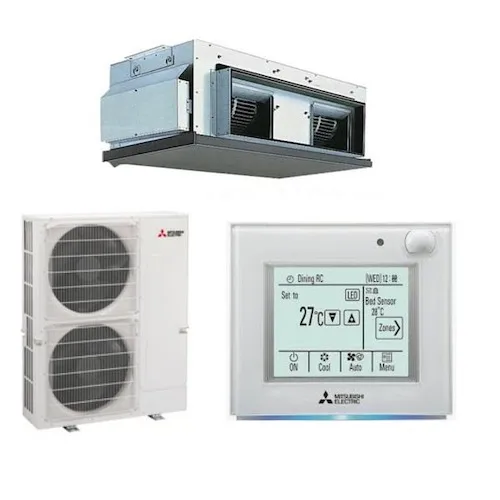
The Mitsubishi Electric PEA-M140GAA (14kW) is our choice for the best ducted option, garnering a solid 5-star rating on the brand's website.
This model is praised for its high external static pressure and its design flexibility, accommodating virtually all room layouts. The unit, operating quietly, ensures year-round comfort, further enhanced by its Wi-Fi control feature.
Plus, the PAR-40MAA wall-mounted controller makes controlling the Mitsubishi Electric even easier. This advanced control system offers 8 temperature and airflow patterns per day for seven days, so you can easily set the ideal environment for your home or office. The backlit LCD screen is easy to read and navigate, making it a breeze to customise settings as needed.
The refrigerant can also be piped up to 75 meters to the concealed ceiling unit, creating a plethora of layout possibilities. However, excellence comes with a price - it retails at a hefty $6,000, which might be a potential downside for some consumers. Another con is that despite the impressive 10.0 kW - 14.0 kW capacity range, higher energy consumption may be a concern for some users.
For this list, we looked into hundreds of p air conditioners listed in various online retailers like Amazon, Bing Lee, eBay and The Good Guys. We evaluated models from the following brands:
We narrowed down our choices based on customer ratings and reviews (as of September 2023). We also considered each model's key product features, including size coverage, ease of use, price and energy efficiency. We came up with what we believe are the 11 best air conditioners available online.
An air conditioner generally provides over 6 kilowatts (kW) of cooling capacity. It's important to check what kW capacity is ideal for your room size and how much it will cost you, to figure out whether it's necessary.
To figure out the best aircon model for you, compare kilowatt capacity (kW) against room size and type:
| Room size (m²) | Room type | Cooling capacity (kW) |
|---|---|---|
| ≤20 | Small kitchen, bedroom, lounge, studio, small office | 2-2.5 |
| 20-40 | Bedroom, small room with high ceiling, mid-sized kitchen | 2.5-5 |
| 40-60 | Large bedroom, ensuite bedroom, mid-sized lounge | 4-6 |
| 60-80 | Large lounge, large open plan area, office, small shop | 5-7 |
| ≥80 | Large office, large shop | 6-9 |
For the most accurate measurement, you need to account for a number of factors, including:
You can try plugging your measurements into this ComfyHome capacity calculator for a quick calculation.
If your aircon is too powerful for your room size, your AC may have to run recurring short cycles to reach the target temperature. This could cause your room to overheat or get too cold, receive insufficient dehumidification or rack up higher running costs and faster wear and tear.
Depending on the specific AC model, your annual running costs could vary by several hundred dollars. The following running costs per year are only an estimate and may differ depending on your usage and energy prices.
| Size | Kilowatt capacity (kW) | Annual cost to run (estimated) |
|---|---|---|
| Small | ≤4 | $306-$492 |
| Medium | 4-6 | $391-$552 |
| Large | >6 | $286-$586 |
There are five main types of air conditioners: split-system, multi-split, ducted, wall/window and portable.
Type | Best for | Features | Price range |
|---|---|---|---|
Split-system | Room/open-plan area ≤60m² |
| $600-$5,500 |
Multi-split | 2-3 rooms next to each other |
| $600-$5,500 |
Ducted | Large homes |
| $5,000-$10,000+ |
Wall/window | Room/open-plan area ≤50m² |
| $400-$1,100 |
Portable | Small rooms ≤20m², those that can't install a split-system at home (e.g. renters) |
| $300-$1,300 |
There are also specific aircon categories, including reverse cycle and inverter/non-inverter types.
An air conditioner could cost you from around $1,390 to over $5,000, depending on the brand, model and range of features.
The fan pushes hot/cool air throughout the room. To minimise noise and draught, pick a model with a large airflow range and multiple fan speeds.
As well as cool and dry modes found on most aircons (and heat modes on reverse cycle models), some aircons offer fan only, auto and eco modes.
Most aircons have an operating range of -10 to 45 degrees Celsius, which should suit most areas in Australia. If you live in an area that is extremely hot and dry, an evaporative cooler could be a cheaper option for your home. Also check out our renovation tips to beat the summer heat, so you can maximise the cool in your home.
The right mount type for you depends on your room type.
Detects when people are in the room, so that the system knows to keep running – some will even shift airflow towards the person – and when to shut off when no one is around, to save energy.
Some recent models can connect to your home Wi-Fi for remote control via your smartphone, which is handy for pre-cooling your home while you're at work, or if you misplace the remote.
Many air filter systems claim to eliminate allergens, bacteria, dust, mould and odours from the air. If anyone in your household has allergies, asthma or sensitive skin, opt for a filter that's labelled anti-allergen. Some filters also include a self-cleaning feature to keep the aircon interior dry and minimise dust build-up and mould growth.
Better designs will have big, well-spaced buttons with labels that are easy to read and a large LCD screen.
This gradually adjusts the temperature when sleeping so that the aircon is quieter and doesn't use as much energy (you don't need the room to be as cold during sleep, especially in the early morning).
If your energy provider offers the PeakSmart service (mandatory in Queensland), you can pick a model that either includes built-in DRED or offers DRED as an add-on. During peak electricity usage periods, your aircon will remotely switch to an economy mode to reduce your power usage and energy costs. However, this is only available with a few companies in specific states.
For those who live in cold regions, opt for an AC with auto de-icing to prevent frost build-up during winter on the outdoor heat exchanger coils.
Split-system aircons are generally super quiet both indoors and outdoors; however, you should test a model's noise level before purchasing. A loud indoor unit could affect your sleep, conversation and activities, while a loud outdoor unit that's near your bedroom/living room could disturb you and your neighbours. Before buying, check local council and strata (if you're living in a unit) restrictions on specific aircon noise levels.
Ozone-depleting refrigerants are harmful to the environment and your health.



If you're after an Australian designed portable air conditioner, our pick is none other than the Coolzy Pro. Here's what you need to know.
Keep the chill at bay this winter with these wallet-friendly AC tips and tricks.
These are the 7 best budget portable air conditioners available right now in Australia.
The Tado Smart AC Control V3+ promises to save you energy while making your existing home air conditioner smart. It's a smart solution that certainly covers the basics of home heating and cooling well generally irrespective of the brand of your home or office's air conditioning.
SPONSORED: Make the cooling choice that's right for you with this easy guide.
From the best energy-efficient option to the top small model, these are the 10 best split-system ACs in Australia right now.
These are the 7 best portable air conditioners you can get right now in Australia.